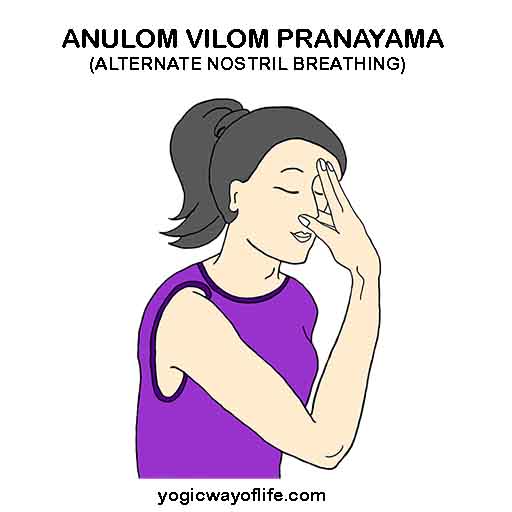We all breathe, but how many of us breathe right? Hardly a few. Breathing is one of those our involuntary activities. Just take a moment, now, to observe the way you are breathing. Is it shallow or deep? Is it long or short? Is it difficult or easy? Are you breathing through your nose or mouth?
Breath is considered the King of the Mind. Your breath rules you. So, you should learn to breathe to control your mind. These five breathing exercises have different benefits, but with the same goal. These methods make us aware of how we breathe and help us use our breath the right way. Read on to know more about the various breathing techniques.
5 Pranayamas for Every Day Practice
-
Deep Abdominal Breathing
Through this breathing technique, we learn to pacify our racing mind and body. It helps us to stay grounded and peaceful. Deep abdominal breathing helps us to connect with our true self. It teaches us to remain calm and composed.
Sit down in a comfortable seated posture. Rest your palms on your knees. Relax your body and close your eyes. Focus on your natural breath. Slowly, deepen your inhalations, allowing the air to flow into your abdomen. Breathe in for a count of 4. Let your stomach expand as you breathe in. Breathe out for a count of 4. Let your belly fall back, close to your rib cage, as you exhale.
Repeat five times. Now increase the duration of your inhalations and exhalations. Practice for 10 minutes.
It is the Skull Cleansing Breathing. A purifying breathing process, it is beneficial for detoxifying your body and mind. In simple words, Kapalbhati is forceful exhalation. Refrain from practicing this breathing technique if you have hypertension or a migraine.
Prepare a steady, comfortable seat. Sitting on a cushion or folded blanket is ideal to support level hips, an erect spine, and a relaxed belly. Take three rounds of deep breaths to prepare your body for the practice. Now, take a deep inhalation and indulge in 15 steady, forceful expulsions. Follow up with three rounds of deep breaths. With this, you complete one round of Skull Cleansing breath. Pause and feel the impact of the breathing practice. Scan for any sensations you experience in your body and mind.
Ensure that the exhales are steady and robust while inhales are passive. Once you become comfortable, you can increase the exhalation count to up to 200 in one round.
It is the Victorious Breath. A restorative breathing practice, it helps you to hold yoga postures for a longer time. It is also ideal to restore the normal functioning of thyroid gland. Ujjayi Pranayama is therapeutic for stress, depression, and recurring Upper respiratory tract infections. It is ideal to boost metabolism and up your body temperature during cold weather.
Sit erect with neck and shoulder relaxed. Take a deep inhalation followed by a slow exhalation. Take a deep breath in through your nose. Exhale through your mouth slowly, constricting your throat, making an ‘Aaaah’ sound. Once you are comfortable, close the mouth as you exhale and make the same sound.
Start practicing this Pranayama for five minutes, extending the time with your meditation.
It is the Cooling breath. You could use this breathing practice to calm your mind and body.
Sit in a comfortable way and close your eyes. Rest the upper row of your teeth on your lower row gently. Separate your lips slightly in such a way that air passes through your teeth. Take a slow deep breathe in through your mouth with a Hiss sound. Close your lips and exhale through your nose. Begin your Practice with 10 minutes, extending the duration to 20 minutes.
Since it lowers your body’s temperature, you could avoid this practice during winters.
Balance your Yin and Yang with this simple breathing technique. To be short, Anulom Vilom is Alternate Nostril Breathing. Your in-breath is through one nostril and expulsion through the other. Advanced practitioners tend to hold the breath before expelling.

Sit in any comfortable seated, upright posture. Close your right nostril with your right thumb. Use your right index finger to close your left nostril. Rest your index and middle fingers of the right hand between your brows. Extend your little finger to the ceiling.
Exhale completely through your left nostril. Keeping the right one closed, inhale through your left for a count of four. Close your left nostril and exhale through your right nostril for a count of four. Inhale through the right and exhale through the left, maintaining the number.
One round of Anulom Vilom Pranayama is something like the following:
Inhale left -> exhale right -> inhale right -> exhale left.
Practice for about 10 minutes.
“Believe nothing, no matter where you read it, or who said it, no matter if I have said it unless it agrees with your own reason and your own common sense,” said Gautama Buddha. So, experiment with these breathing techniques and feel the difference they bring!
